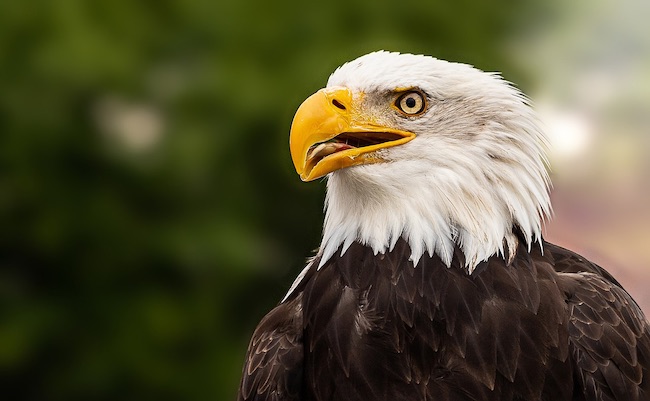
Description |
The bald eagle, America's symbol, is the largest eagle commonly found in the United States and Canada. With a 90 inch wingspan, a mature bald eagle, is unmistakable against the clear blue sky. An adult bald eagle has a white head, white tail and brown body. It has a distinctive white eye, and massive yellow beak. Immature and juvenile Bald eagles are all brown and resemble Golden eagles. It takes four to five years for bald eagles to acquire adult plumage. Males and females look alike. Bald eagles can grow to 33 inches. Bald eagles, like many other raptors, were decimated by the pesticide known as DDT. As DDT entered the eagle's food chain through the fish it ate, the chemical accumulated in its body and reduced protein levels of its eggshells. As a result, eagles often crushed their own eggs while incubating. Bald eagle numbers dropped precipitously and it became an endangered species and "posterbird" for conservationists. In 1972, DDT was banned and the bald eagle recovered quickly. Today Bald eagles are no longer endangered and can be found in many locations across the United States and Canada. |
Diet |
| Bald eagles usually eat fish but will often eat carrion as well. They are known to "pirate" fish from smaller ospreys and gulls. Bald eagle nests may be as high as 150 feet in a tree, and is renovated and added to every year. |
 |
Bald Eagle Photo Credit - https://pixabay.com/photos/bald-eagle-adler-bird-eagle-raptor-5657154/ |
Habitat |
| Bald eagles are normally found near large bodies of water, but may be found at different times of the year anywhere in the United States and Canada. |
Range |
| Bald eagles are most common on the coasts of Oregon, Washington, British Columbia, Yukon, and Alaska, where they congregate in great numbers along streams and rivers that support large salmon spawns. In late fall and winter, hundreds of Bald eagles may descend upon such streams and rivers. Bald eagles can also be found on portions of the Atlantic Coast, Great Lakes, and Rocky Mountains. |